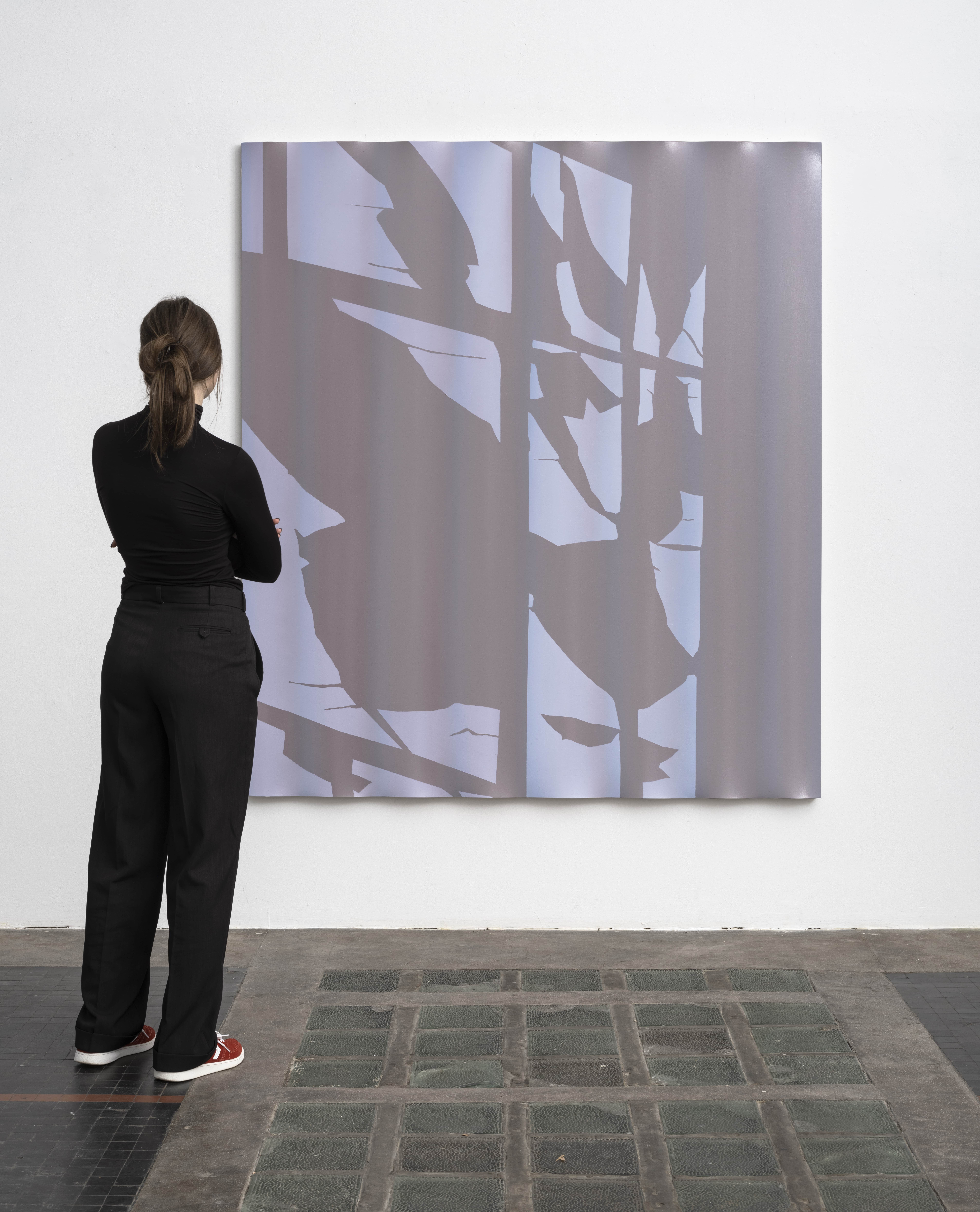
Does a painting conceal more than it reveals? Emilia Kina examines the nature of paintings, the illusion embedded in them, and their physical construction. In her works, she often indirectly alludes to forms from modern and contemporary art history.
„Le soir qui tombe” is the title of a painting by the Belgian surrealist René Magritte, and a source of inspiration for Kina’s multi-staged painting story. Kina’s paintings are arranged in the gallery space in a staging whose theme is the cyclicality of nature and its inherent dramaturgy, the human inclination to read the world—and art—as a romantic spectacle. This scenic concept promises sublime pleasure and the anxiety associated with the elusiveness and fragility of the anticipated moment, the ideal instant, this one image.
The paintings are linked in sequences. The light seems to shift from canvas to canvas, suggesting a space/time relationship. This is yet another level of illusion the artist introduces into her painting that goes beyond the flexible shaping of the canvases. Pleated curtains and draperies, a leading theme in Kina’s work, retain lights and shadows. Contemplating the visible world while toying with temptation and desire seems to be their primary function. Ultimately, however, they uphold the mystery that awaits us on the other side.





















